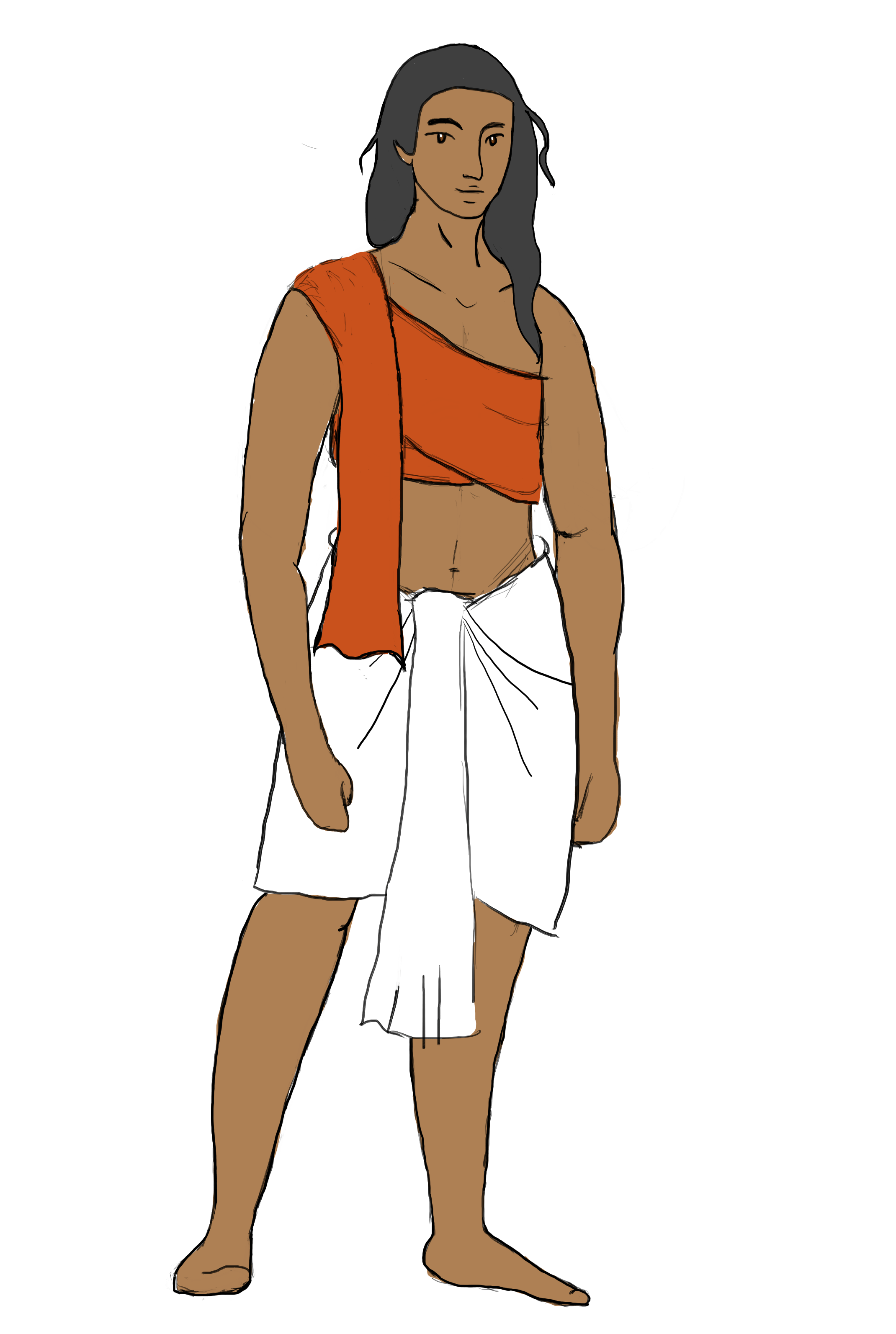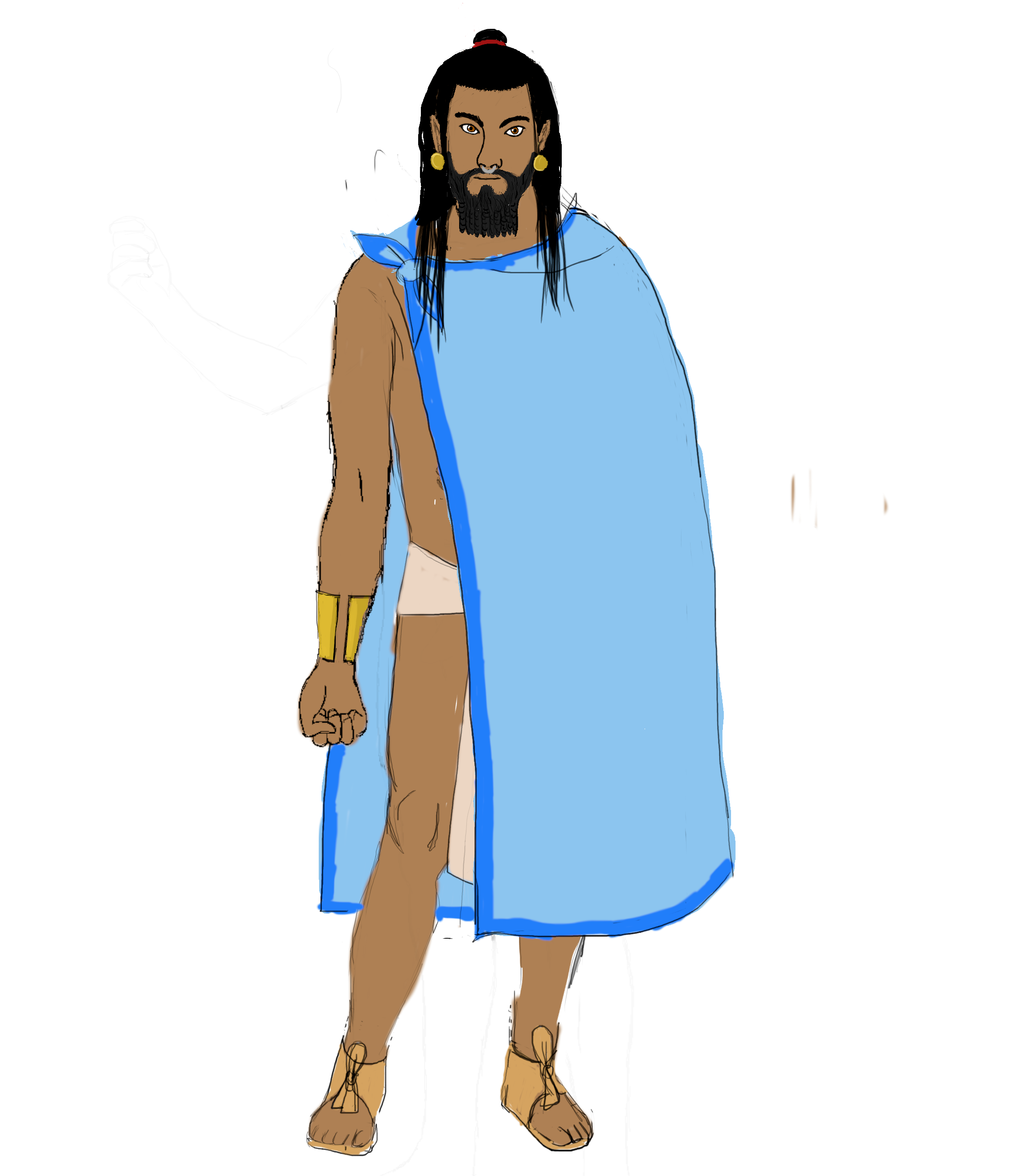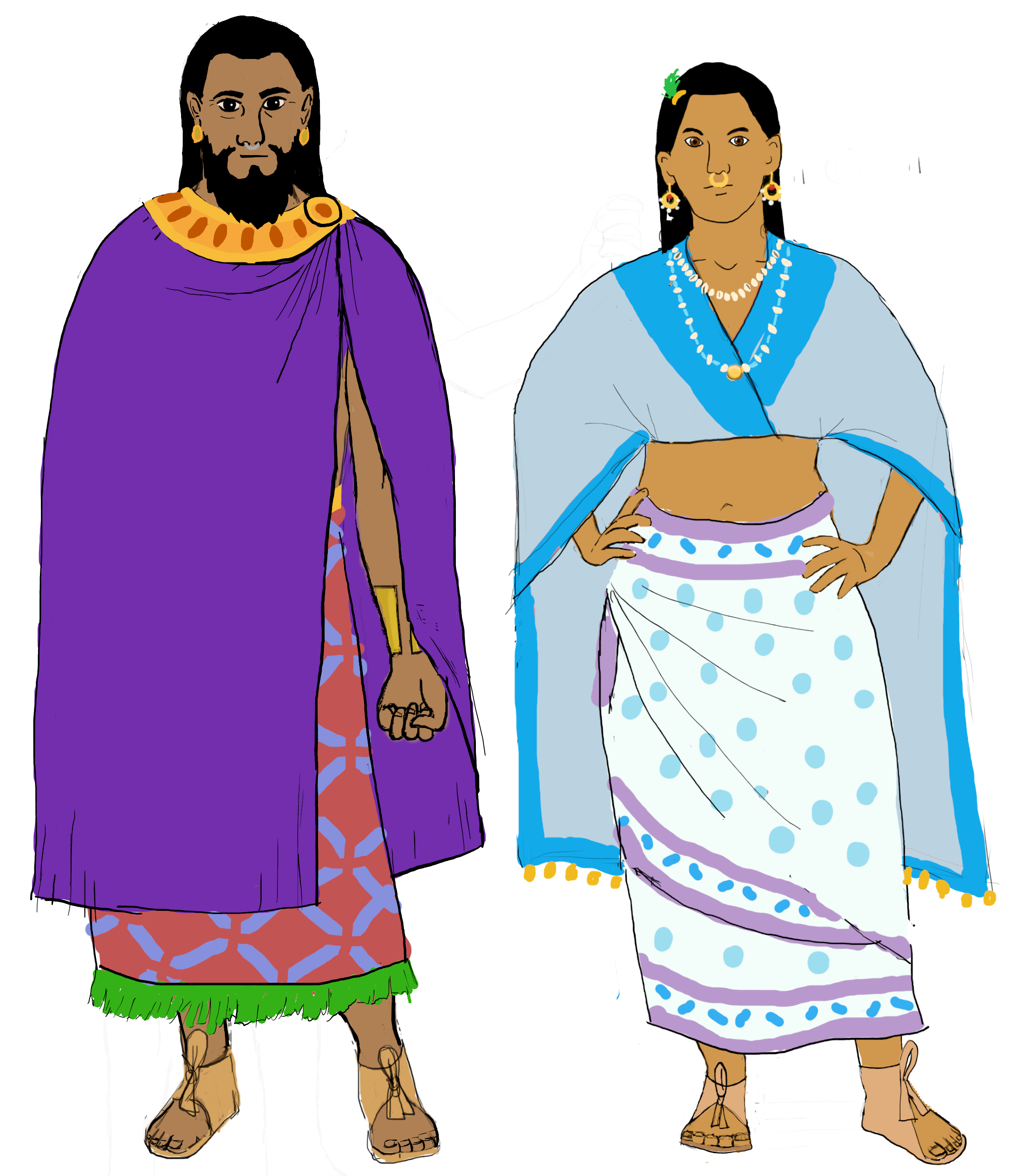Zeribian clothing
Basic principles
Zeribian clothing is usually made from uncut fabric. Most clothes are not sewn, but are folded from square pieces of fabric. Zeribians fabrics usually have very elaborate patterns that are costly to make and they feel it would be wrong to cut them. Instead, many of the fabrics are multi puropose, and can be used as many different clothes by folding them differently.Fashion and climate
Zeribians inhabit the tropical Eastern Islands. The climate is hot and wet all year. Zeribians prefer airy and comfortable clothes, but staying warm isn't usually an issue. The most of this article represents the typical clothing on the inner islands during the 8th century AH. The inhabitants of Der Fem Islandand Southern Continent have adapted to the colder climate. In these areas many have adopted Faren style clothes, like tunics.Children
The children under 7-years-old don't have restrictions on clothing. Many children go about naked, but they might wear simple capes and tunics for warmth, or be dressed in loincloth or dress for more formal occasion. After the children have gone through the Second naming, they are required to wear at least a loin cloth in public.Women
The main part of the Zeribian woman's clothing is the wrap around skirt, šuš, made of a rectancular piece of cloth, that is decorated with elaborate designs. The skirt is usually weaved from rough material such as plant fabric or wool, and the fabric is not broken by sutting and sewing. The šuš is also worn by men for formal occasions, but in different patterns. The girls are expected to start covering breasts on formal occasions from puberty. For this purpose they can wear a dress, or a long scarf, that can be tied in many different fashions depending on the fashion and personal preference. Showing breasts is more common at home, in the countryside, and among the commoners.Unmarried girls usually wear a two-piece dress that shows the belly. Married woman are expected to wear a more covering dress of at least knee lenght for formal occasions. Traditionally this would be a šuš-type fabric, tied on top of or right under breasts. Lately many especially on the West Island have started to prefer Faren-type tunics and dresses.
Men
The basic part of the men's clothing is the loincloth. Decorative capes are also worn often, and šuš-skirts are part of the formal attire.Loincloths
The loinclothes are not just worn for modesty. The hanging front part is decorated with elaborate patterns, that are used to show the man's status and clan, and different loinclothes are needed for different occasions. When a man is wearing a skirt or a tunic, and the loin cloth cannot be seen properly, they wear a sin haraške, rectangular piece of clothing that is fastened from a belt to replace the hanging front part of the loincloth. This accessory is a required part of the formal attire. The women can also wear a loincloth as an underwear, but because the fabric isn't supposed to be seen in public, it's decorated with small pictures for esthetic rather than cultural value.Šyrzir
The third-gender Šyrzir clothing varies a lot, but is usually mix of male and female clothing. A common dress is female shirt + a male loin cloth.
Nobles
Clothing vocabulary
targe 'clothes, canvas', also used for simple unsewn cape.fab 'tunic', or a similar sewn clothing, preferred by the Farens.
haraške 'loincloth', the basic male lower garment.
sin 'belt'
sin haraške a belt-like accessory worn by men with tunics and skirts to replace the loin cloth
šuš 'skirt' or both all genders.
nige 'dress', worn by women.
pedix 'shoe'
The Zeribians prefer bright colors and elaborate patterns (that are not properly shown in the illustrations here). Male loin cloths are visible, and usually have larger patterns that are visible from far. Female loin clothes are more comfortable to wear and have smaller patterns. The clothes of the nobility are of the finest sea silk and dyed with the most expensive dyes.
Accessories:
The Zeribians are fond of eye-caching piercings. Nose rings and earrings are common for all genders. Men usually wear earplugs that are bigger based on their rank, while the women wear large hanging jewelery. Many other piercing such as lip and tongue piercings are used to indicate status in government, priesthood or military. The jewelery is made from gold, silver and copper. Many natural materials are used, such as sea shells and feathers of the local birds. Precious stones and jade are also popular.
Hairstyles:
Adult Zeribian nobles of both genders never cut their hair. They often they keep it on a bun and or braided. The older noblemen also keep a long beard that can be braided as well. Upper-class women have long hair, which the unmarried wear loose, and the married usually tie close to the head, and sometimes cover with a scarf. The commoners usually have a bowl cut, and might keep a short beard.
The fishermen don't bother wearing a lot. It's going to get wet anyway! The Zeribians of both genders usually swim naked (and often), but they prefer to bathe within their own social caste.









Comments